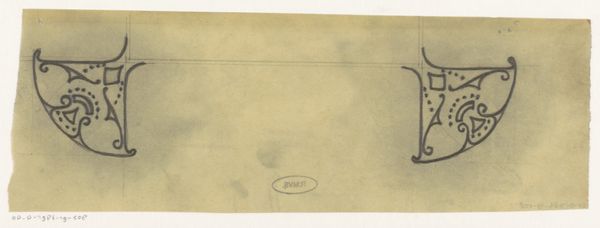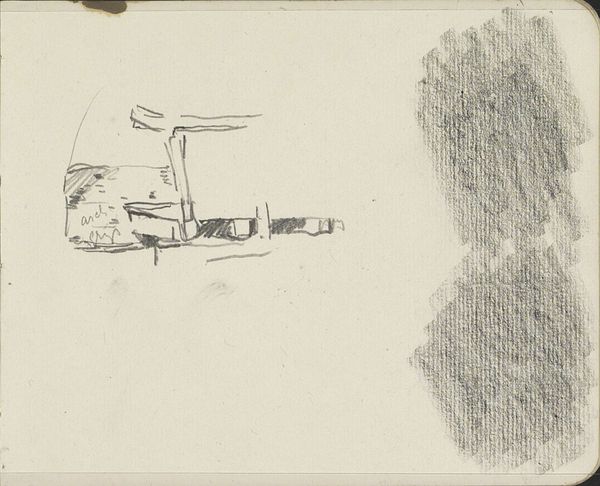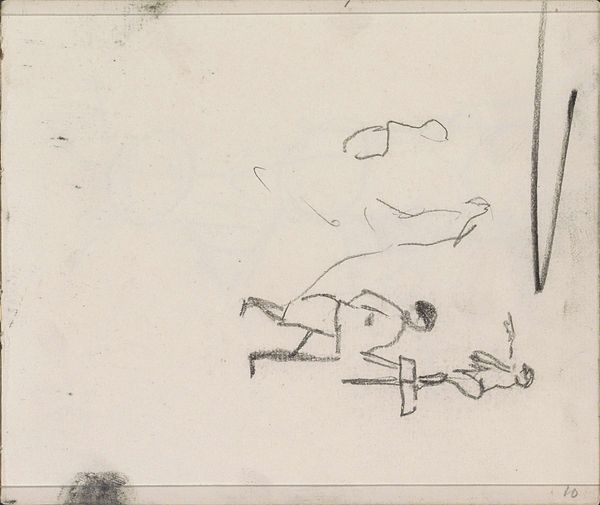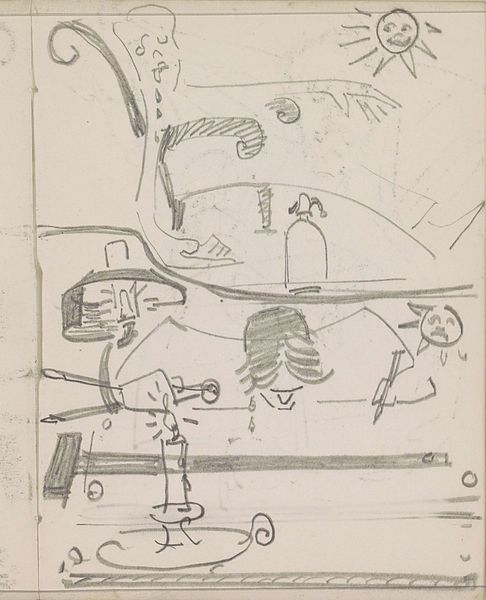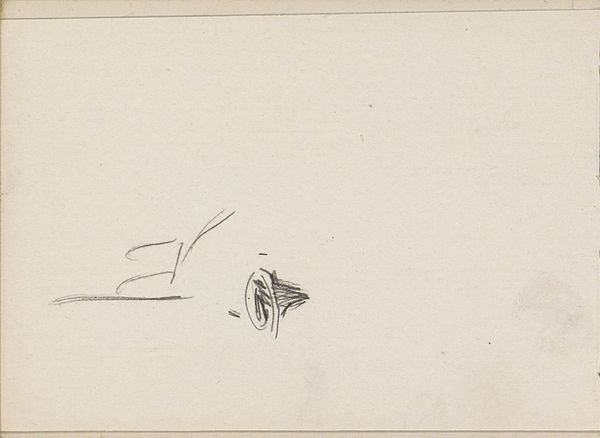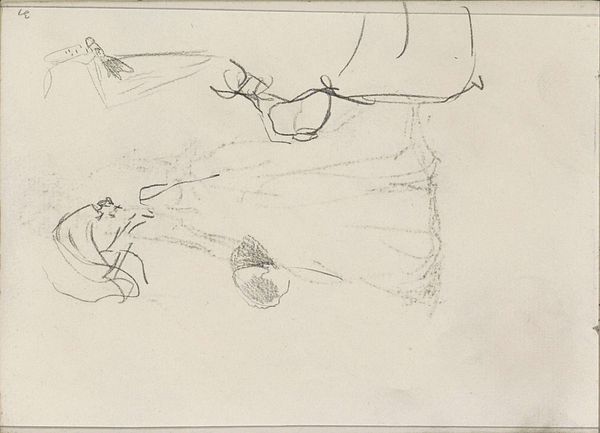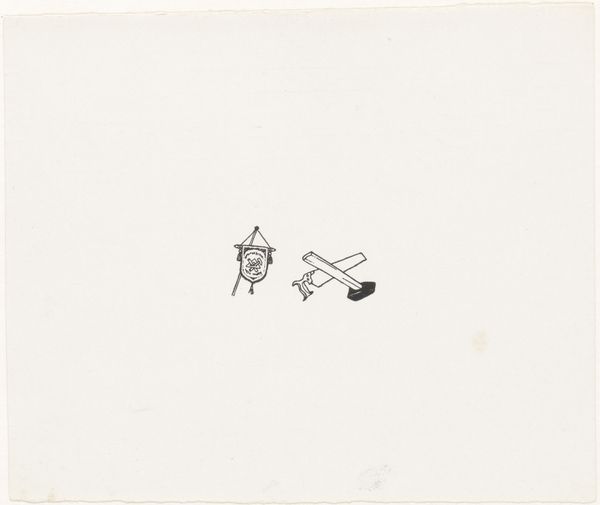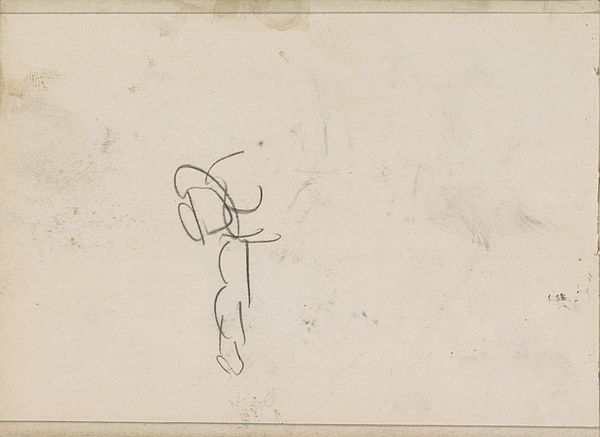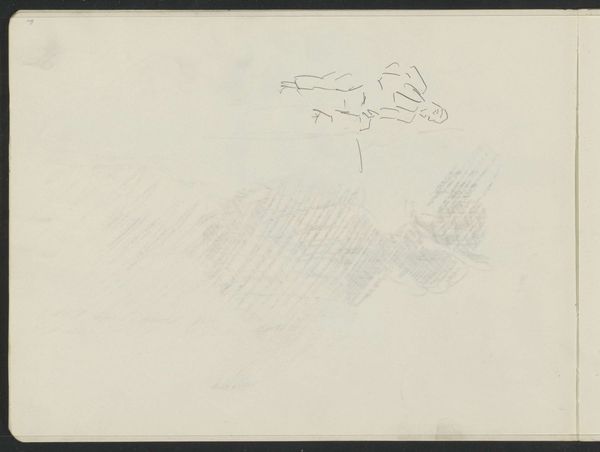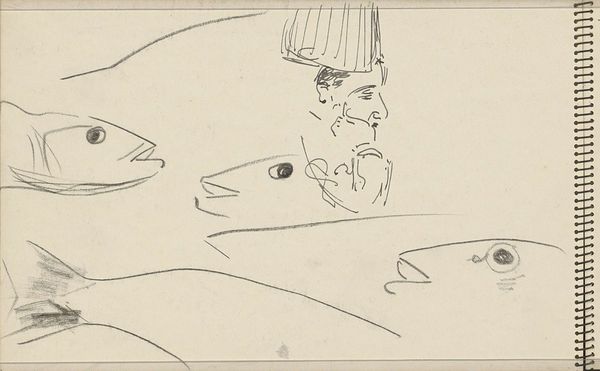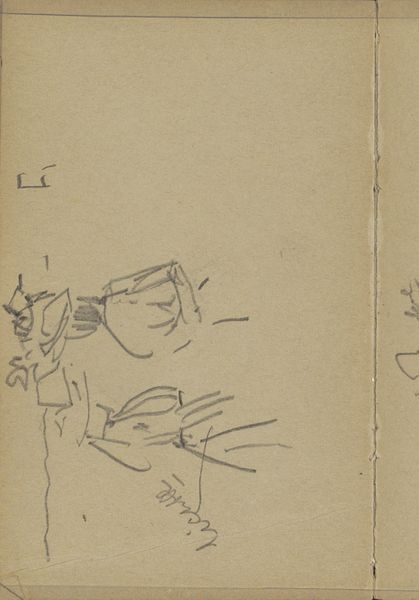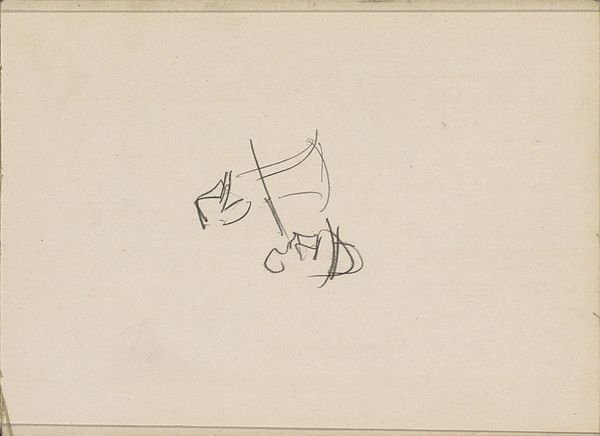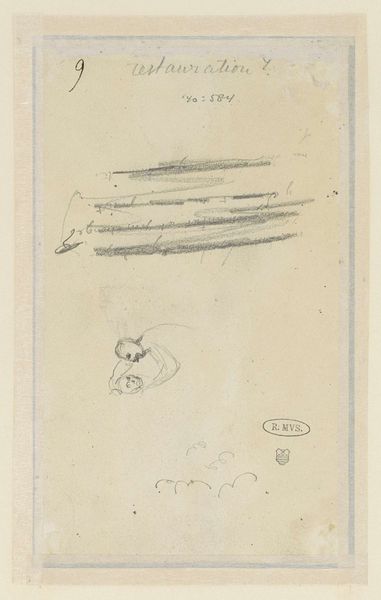
drawing, pencil
#
portrait
#
drawing
#
figuration
#
pencil
Dimensions: 102 mm (height) x 169 mm (width) (bladmaal)
Editor: Here we have Edvard Weie’s “To stående figurer,” created between 1923 and 1927, a pencil drawing. The quick, almost frantic lines create an air of uncertainty or maybe anxiety. What do you make of this seemingly simple sketch? Curator: I see a poignant reflection of the post-World War I era, when societal norms were questioned, and anxieties were pervasive. Weie’s style seems to engage in that disruption. How do these figures interact, not just within the frame, but within the societal context of the 1920s? Do they represent a specific social class, or perhaps a response to the changing roles of men and women during this period? Editor: It's hard to tell if there’s any interaction between them, they almost appear detached. I didn’t consider that their relationship could allude to social changes. It’s as if the figures lack the substance and stability to act as real figures. Curator: Precisely! Weie could be commenting on the fragility of social structures and personal identities in a time of immense upheaval. What about the space they occupy? How does the negative space contribute to the overall sense of isolation or uncertainty? Do the lines appear fragile and incomplete, much like how people viewed the rebuilding effort? Editor: Now that you mention it, the negative space does feel like an absence, adding to the unsettling atmosphere. Also, that one isolated line on the right: is that even part of the drawing? What is it there to express? Curator: Perhaps it highlights how people’s individual stories and personal histories during that period were perceived. These figures existing at the same time do not dictate any relation, which reflects a social disruption. Editor: I had not thought of this work in terms of historical anxiety, or a type of societal portrait. It's a great reminder of how social forces impact artistic expression! Curator: Absolutely. It encourages us to investigate the various levels of experience contained within an artistic process. These figures ask not only 'who' is represented, but 'why' and 'how.'
Comments
No comments
Be the first to comment and join the conversation on the ultimate creative platform.
